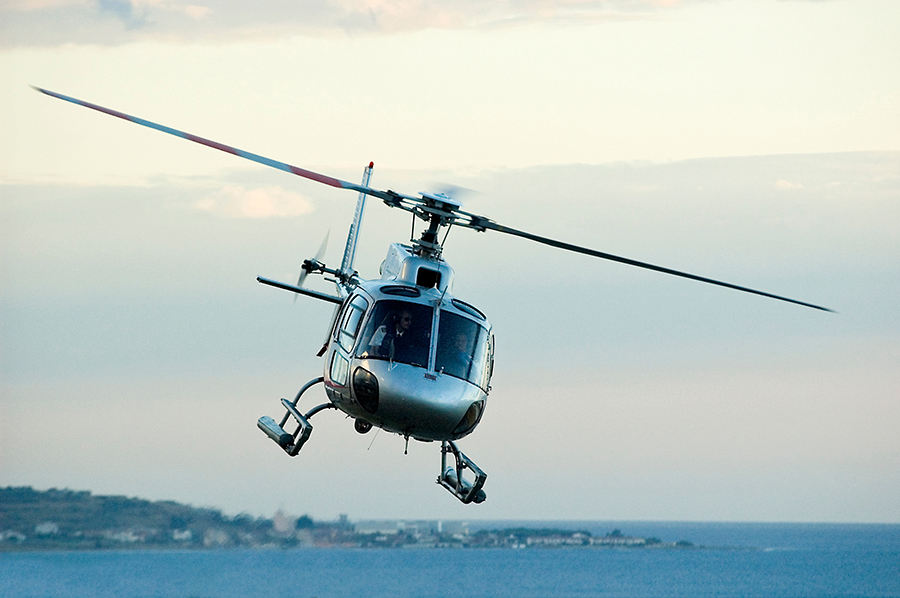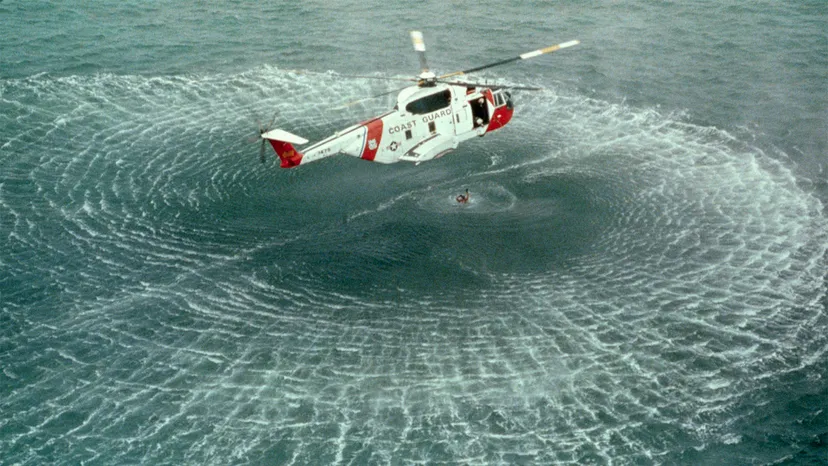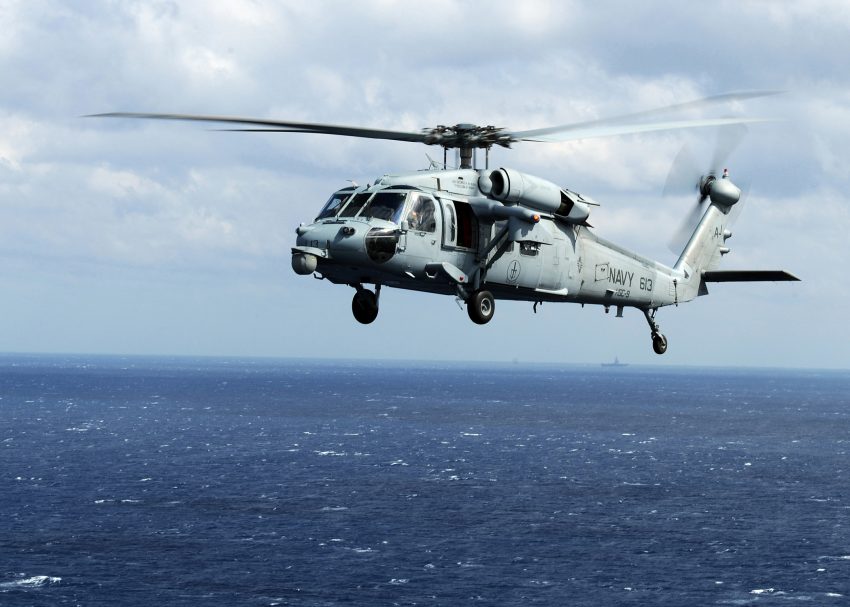Yes, helicopters can fly over the ocean, but it’s not without challenges. Helicopter journeys over the ocean have been achieved in the past, with notable instances like transatlantic flights and maritime operations.
However, these flights are not as common as fixed-wing aircraft, primarily due to technical limitations. Challenges include limited fuel capacity and range, weather unpredictability, and the need for advanced navigation systems and safety equipment.
To ensure safety and success, specialized training and rigorous safety measures are imperative for both pilots and helicopters. The future holds potential for oceanic helicopter flights with emerging technologies like electric and hybrid propulsion systems, expanding the possibilities beyond search and rescue missions to oceanic tourism and offshore operations. While there are hurdles to overcome, the skies over the ocean are not off-limits to helicopters.
How Far Helicopters Fly Far From Land?

The distance a helicopter can fly from land largely depends on its specific model, fuel capacity, and any additional modifications or equipment. Generally, most conventional helicopters have a range of 300 to 500 miles on a full tank of fuel.
However, this range can be extended with the use of auxiliary fuel tanks, allowing some helicopters to venture farther from land.
In specialized scenarios, helicopters have been modified to fly longer distances, such as for search and rescue missions or offshore operations, pushing their limits to several hundred miles from land.
Yet, for oceanic flights, the availability of emergency landing options and the capability to handle adverse weather conditions are essential considerations.
Overall, the range of a helicopter varies, but they are designed to be versatile and adaptable to different mission requirements.
How low can a helicopter fly over the ocean?
The altitude at which a helicopter can fly over the ocean can vary depending on several factors, including the type of helicopter, its mission, and regulations. However, there are some general guidelines
Regulations
Helicopter operations are subject to aviation regulations, which often stipulate minimum safe altitudes. These regulations are in place to ensure the safety of the aircraft and other maritime and aerial traffic. In many cases, helicopters are required to maintain a minimum altitude of 500 feet above the ocean’s surface. This minimum altitude may increase in congested or populated areas.
Helicopter Type
The type and capabilities of the helicopter play a significant role in determining how low it can safely fly over the ocean. Some helicopters are specifically designed for overwater operations and may have features like flotation devices, emergency equipment, and extended range to ensure safety during low-altitude flights.
Mission
The nature of the mission also impacts the helicopter’s operating altitude. Search and rescue missions, for example, may require helicopters to fly at lower altitudes to conduct detailed searches over the water.
Weather Conditions
Weather conditions, including visibility, cloud cover, and wind speed, can influence the safe operating altitude of a helicopter. Low-visibility conditions may necessitate higher altitudes to maintain safety.
Terrain and Obstacles
The presence of obstacles or terrain along the coastline or in the ocean can affect how low a helicopter can fly. Pilots must maintain a safe altitude to avoid collisions with obstacles like ships, offshore platforms, or geological features.
Fuel and Range
Helicopters have limited fuel capacity, and the range of the aircraft can influence how low they can fly over the ocean. Long-distance flights may require higher altitudes to conserve fuel and reach the intended destination.
Which Helicopters Are Commonly Used for Ocean Flying?
Helicopters used for ocean flying, often referred to as overwater or offshore operations, need to meet specific criteria to ensure safety and reliability in maritime environments. Several helicopter models are commonly used for these missions. Here are some examples
Sikorsky S-92: This medium-lift helicopter is often employed for offshore oil and gas operations, search and rescue missions, and passenger transport to offshore platforms. It has a range of up to 539 nautical miles.
Eurocopter AS365 Dauphin: Known for its speed and versatility, the AS365 is used in various roles, including offshore transport, search and rescue, and law enforcement. It has a range of around 400 nautical miles.
AgustaWestland AW139: Widely used for offshore transport and search and rescue missions, the AW139 offers a range of up to 570 nautical miles.
Bell 412: This utility helicopter serves in various capacities, including offshore support, emergency medical services, and law enforcement. Its range can extend up to 358 nautical miles.
Sikorsky S-76: A versatile and widely used medium-sized helicopter, the S-76 is utilized for offshore transport, executive travel, and search and rescue operations. It typically has a range of 367 nautical miles.
Airbus H225 Super Puma: Often seen in offshore oil and gas operations, the H225 Super Puma has a range of up to 534 nautical miles.
What Are the Risks of Flying Helicopters at High Altitudes?
Flying helicopters at high altitudes presents several risks and challenges, which pilots and operators must be aware of and prepared for. Some of the primary risks include
Reduced Engine Performance
As a helicopter ascends, the air density decreases, which affects the engine’s performance. The engine must work harder to maintain the necessary lift and thrust. If the engine is unable to generate enough power, it may lead to engine stress, overheating, or even failure.
Oxygen Deprivation
At higher altitudes, the air contains less oxygen, which can result in oxygen deprivation for passengers and crew. Prolonged exposure to reduced oxygen levels can lead to hypoxia, a condition that impairs cognitive and motor functions, potentially endangering the flight.
Cold Temperatures
High altitudes are associated with lower temperatures. The colder environment can affect the helicopter’s mechanical components, including the engine and rotor blades. It may also pose discomfort and safety concerns for passengers and crew.
Turbulence
High altitudes are more prone to turbulence and erratic wind patterns. Turbulence can make the flight less stable, increasing the risk of accidents or discomfort for those on board.
Risk of Stalling
Flying too high can elevate the risk of a stall, especially if the engine struggles to provide sufficient power for lift. A stall can lead to a loss of control and potentially result in a crash.
Helicopter pilots are trained to operate within safe altitude limits, and helicopters are designed to perform optimally at specific altitudes. Flying too high is generally avoided to ensure the safety, efficiency, and reliability of the flight.
Is it safe to fly over the ocean?
Yes, it can be safe to fly over the ocean in a helicopter if certain safety protocols and equipment are in place. These measures include pilot training, equipment, and helicopter design tailored for overwater flights. Helicopter pilots undergo specialized training for overwater operations, learning how to handle various scenarios such as emergency landings on water. They also receive instruction on navigation, meteorology, and communication for safe overwater travel.
Safety equipment is crucial for ocean flights. Helicopters used for overwater operations are often equipped with flotation devices or floats that enable the aircraft to remain afloat in case of an emergency landing on water. Additionally, life rafts and emergency beacons can aid in rescue efforts.
Furthermore, redundancy is a key aspect of safety. Many helicopters designed for overwater use come equipped with dual engines. In the event of an engine failure, the backup engine can provide additional safety.
Despite these safety measures, safety also depends on factors like weather conditions, regular maintenance of the aircraft, and the experience and expertise of the pilot. Flying over the ocean should always adhere to strict safety protocols, including thorough pre-flight checks, to minimize risks and ensure a safe journey.
Why do pilots avoid the Pacific Ocean?
Pilots don’t necessarily avoid the Pacific Ocean entirely, but they do plan their routes carefully. The Pacific Ocean is vast, and it can present unique challenges for pilots, such as long distances between suitable landing sites, extreme weather conditions, and extended flight times. These factors can make flying across the Pacific more complex and require additional safety measures. Pilots carefully plan their routes and consider factors like fuel range, alternate airports, and the availability of suitable emergency landing sites. While the Pacific Ocean is crossed regularly by commercial and private flights, it requires thorough planning and preparation to ensure safe and efficient journeys.
Why Are Helicopters Restricted from Flying at Night in Many Cases?

Flying in a helicopter at night is an exciting experience for both seasoned and novice pilots. However, international aviation regulations generally limit helicopter flights to daytime hours.
This restriction means that pilots must operate their helicopters between one hour after sunset and one hour before sunrise, provided they hold a special private or professional license that certifies them for night flying.
Such certification is mandatory under both the Visual Flight Rules (VFR) and Instrument Flight Rules (IFR), which govern how pilots should handle their aircraft in various weather and visibility conditions.
Nighttime flying can be challenging due to reduced visibility, making it harder for pilots to maintain their course and navigate in unexpected situations.
Additionally, helicopters lack the advanced navigation systems found in larger aircraft, which enable complex maneuvers in poor visibility.
The safety risks associated with night flying are significant, leading many commercial operators to stick to daytime operations for the sake of safety. These regulations are in place to ensure the safety of all passengers during the darkest hours of the day.
In essence, while the thrill of flying a helicopter at night is undeniable, safety considerations and aviation rules underscore the importance of adhering to daytime operations in most cases.
FAQ
How far can a helicopter fly in KM?
Helicopters’ range varies significantly by type, but many modern helicopters can typically fly between 400 to 800 kilometers without refueling.
Is there a helicopter that can cross the Atlantic Ocean?
Yes, there are helicopters capable of transoceanic flights, but they are often specially modified for long-range missions, and such flights are rare.
What is a safer seaplane or a helicopter?
The safety of seaplanes and helicopters depends on various factors, including maintenance, weather, and pilot expertise. Both can be safe when operated within regulations.
What is the longest helicopter flight?
The longest recorded helicopter flight was around 2,213 miles (3,563 kilometers), accomplished by a modified H-1 Huey during a transatlantic flight.
What is the safest helicopter in the world?
Safety depends on various factors, but some of the safer helicopters include the Sikorsky S-92 and the AgustaWestland AW139.
How far can a luxury helicopter fly?
Luxury helicopters often have similar ranges as standard helicopters, typically around 400 to 800 kilometers.
Can a helicopter fly for 10 hours?
In some cases, helicopters can fly for up to 10 hours, especially with extended-range fuel tanks and efficient engines.
How safe is a helicopter?
Helicopter safety depends on maintenance, pilot training, and adherence to regulations. When properly maintained and operated, helicopters can be safe.
What fuel do helicopters use?
Helicopters primarily use aviation gasoline (avgas) or jet fuel (kerosene) depending on the engine type.
Can a helicopter fly in the rain?
Yes, helicopters can fly in light to moderate rain. However, heavy rain and adverse weather conditions can limit or restrict flights.
Final words
To sum up, helicopters can indeed fly over the ocean, but it’s important to understand the challenges and safety measures involved. These versatile aircraft have played vital roles in various missions, from search and rescue to offshore operations.
However, they have limitations, such as range and payload capacity, which must be considered when planning oceanic flights. Safety is a top priority, and strict regulations, advanced technology, and careful planning are essential for successful overwater helicopter journeys.
As the aviation industry evolves, we can expect further improvements that will expand the capabilities of helicopters in oceanic environments. So, while they have their limits, helicopters are an essential part of aerial mobility, making it possible to venture over the vast ocean.

